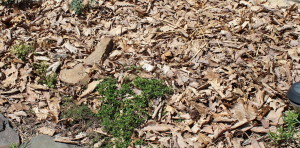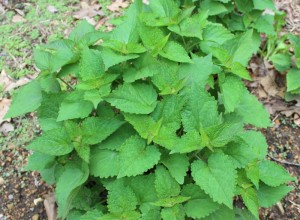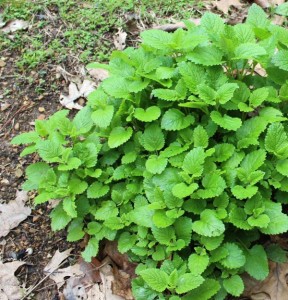For the last two weeks the herb and flower beds have been calling to me. I’ve been wanting to clear them out of the leaves that were allowed to accumulate there for protection from winter weather. Perennial herbs may or may not survive in our location in the mountains. It all depends on the severity of the Winter and whether the plants were protected long enough into Spring from freezing temperatures.

Here in Central Pennsylvania we have a frost-free date in the middle of May so we try not to plant anything but cold crops until after that date. It’s just not worth the risk of forgetting to bring in pots on a cold night that might erase all the time and energy spent on planting those pretty posies. Instead, we turn our attention to prepping the garden for receiving its first plants and picking up sticks in the yards so the lawn mower will be happy.
Historically, we’ve had record freezing temperatures well into the month of May but the forecast for the next 10 days shows lows only getting down into the 50s. Now that it seems warm enough outside we can rake out the flower and herb beds. The leaves were purposefully kept there covering up the herbs that are supposed to be perennial. Once they’re uncovered we’ll be able to figure out which plants survived and which ones need to be replaced this year.
I’m curious what other people do to overwinter their perennial herbs. We are surrounded by a forest so it’s simple for us to rake leaves over the plants to hold in the earth’s warmth.


A couple of hardy perennial herbs return each year in the garden where they receive no protection from Winter’s icy grip. Lemon balm and anise hyssop roots bring back these fast-growing herbs in early Spring. Their numerous seeds are sought after by goldfinches and dark-eyed juncos who visit us in the cold months, but the leftover seeds will produce many small plants in the vicinity of the mother plants.
We use leaves as a kind of mulch in our flower and herb beds, so some of the leaves will stay around the base of the plants when we rake out the beds.